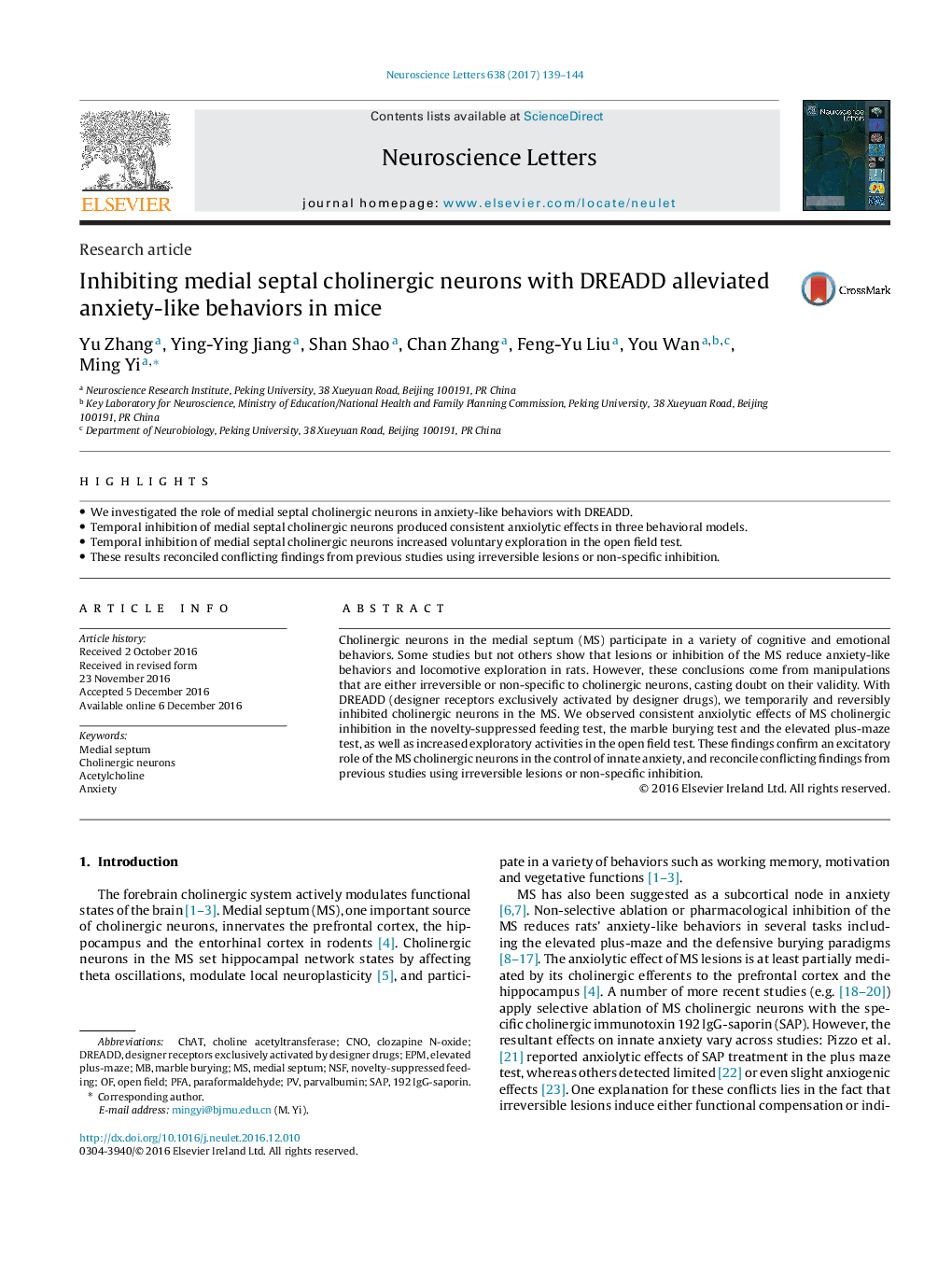| Article ID | Journal | Published Year | Pages | File Type |
|---|---|---|---|---|
| 5738862 | Neuroscience Letters | 2017 | 6 Pages |
â¢We investigated the role of medial septal cholinergic neurons in anxiety-like behaviors with DREADD.â¢Temporal inhibition of medial septal cholinergic neurons produced consistent anxiolytic effects in three behavioral models.â¢Temporal inhibition of medial septal cholinergic neurons increased voluntary exploration in the open field test.â¢These results reconciled conflicting findings from previous studies using irreversible lesions or non-specific inhibition.
Cholinergic neurons in the medial septum (MS) participate in a variety of cognitive and emotional behaviors. Some studies but not others show that lesions or inhibition of the MS reduce anxiety-like behaviors and locomotive exploration in rats. However, these conclusions come from manipulations that are either irreversible or non-specific to cholinergic neurons, casting doubt on their validity. With DREADD (designer receptors exclusively activated by designer drugs), we temporarily and reversibly inhibited cholinergic neurons in the MS. We observed consistent anxiolytic effects of MS cholinergic inhibition in the novelty-suppressed feeding test, the marble burying test and the elevated plus-maze test, as well as increased exploratory activities in the open field test. These findings confirm an excitatory role of the MS cholinergic neurons in the control of innate anxiety, and reconcile conflicting findings from previous studies using irreversible lesions or non-specific inhibition.
